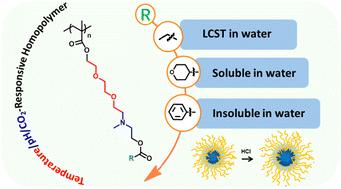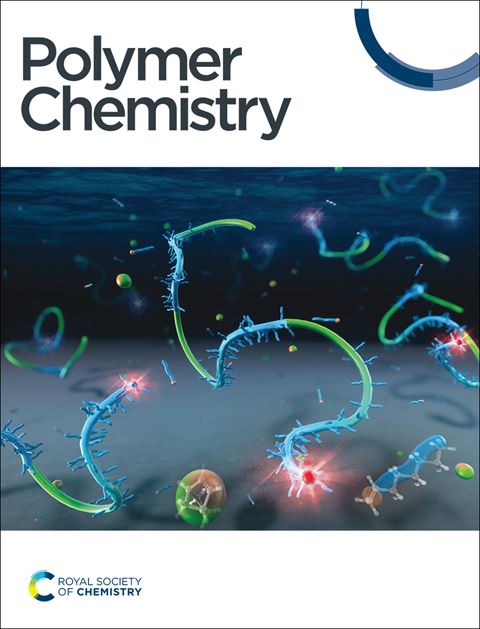Three novel temperature/pH/CO2-triple-responsive homopolymers namely P(Et-N-EO2MA), P(THP-N-EO2MA) and P(Ph-N-EO2MA) were prepared by reversible addition–fragmentation chain transfer (RAFT) polymerization. They have the same backbone structure but different types of end substituents i.e., ethyl, tetrahydropyran, and the benzene ring, respectively. Subsequently, their responsive properties were studied. P(Et-N-EO2MA) has a lower critical solution temperature (LCST)-type cloud point (CP) in aqueous solution and is affected by many factors such as the molecular structure and weight, concentration, additives, pH and CO2. P(THP-N-EO2MA) is soluble in water, but in different buffer solutions, it shows a soluble–LCST–insoluble transition, and its LCST-type CP can also be adjusted by molecular weight and concentration. P(Ph-N-EO2MA) is insoluble in water, but reversible phase transformation can be achieved by adjusting the pH of the solution or injecting CO2, and it also shows different properties in buffer solutions and an upper critical solution temperature (UCST)-type CP in n-butanol. In addition, since P(Ph-N-EO2MA) is amphiphilic, it can be self-assembled in solution, and the release of Nile Red (NR) can be achieved under the stimulation of acid. The different properties of these homopolymers show the effect of substituents on the responsiveness of multistimuli-responsive polymers, which provides ideas for the design of stimuli-responsive polymers, and have good application prospects in the fields of self-assembly and controlled release.

| 公司名称 | 产品信息 | 采购帮参考价格 | |
|---|---|---|---|
| 百灵威 | 4-dimethylaminopyridine |
|
¥17.00~¥33423.38 |
| 阿拉丁 | propanoic acid |
97%
|
|
| 阿拉丁 | benzoic acid |
97%
|


